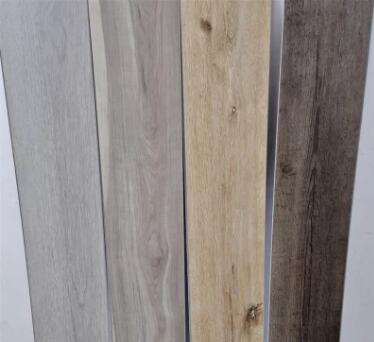Is plastic flooring suitable for wet areas
2023-11-03
Plastic flooring, including certain types of vinyl and polyvinyl chloride (PVC) flooring, can be suitable for wet areas when selected and installed appropriately. However, the suitability of plastic flooring in wet areas depends on the specific product, its properties, and the installation method. Here are some considerations:
1. Type of Plastic Flooring:
- Vinyl Flooring: Certain types of vinyl flooring, such as luxury vinyl planks (LVP) or luxury vinyl tiles (LVT), are designed to be waterproof or water-resistant. These products have a waterproof wear layer and are suitable for wet areas like bathrooms, kitchens, and laundry rooms.
- PVC Flooring: PVC flooring, including some interlocking PVC tiles, is also designed for use in wet environments. These tiles are often used in areas such as garages, basements, and commercial kitchens where water resistance is essential.
2. Waterproof vs. Water-Resistant:
- When choosing plastic flooring for wet areas, look for products explicitly labeled as waterproof or water-resistant. Waterproof flooring can withstand prolonged exposure to water without damage, while water-resistant flooring can handle occasional spills or moisture.
3. Installation Method:
- Proper installation is crucial for the performance of plastic flooring in wet areas. In wet environments, it's essential to ensure that the flooring is well-sealed to prevent water from seeping between the seams or beneath the flooring.
- Some plastic flooring products are designed for floating installations, while others require adhesive. The choice of installation method can affect the waterproofing of the floor.
4. Seams and Joints:
- Pay attention to the seams and joints in the flooring. For areas prone to water exposure, it's important to use appropriate seam sealers and adhesives to create a watertight seal. This is particularly important in bathrooms and other wet rooms.
5. Maintenance and Cleaning:
- Plastic flooring in wet areas should be regularly cleaned and maintained to prevent the growth of mold or mildew. Using non-abrasive, pH-neutral cleaners is recommended.
6. Slip Resistance:
- In wet areas, consider the slip resistance of the flooring. Look for plastic flooring with slip-resistant properties to enhance safety, especially in areas with water or moisture.
7. Underlayment:
- Depending on the specific product and installation method, you may need to use an appropriate underlayment to enhance moisture resistance and comfort underfoot.
It's important to note that not all plastic flooring products are suitable for wet areas, so it's crucial to choose the right type and ensure proper installation. Additionally, local building codes and regulations may have specific requirements for flooring in wet areas, so it's a good practice to check with local authorities and, when in doubt, consult with a professional flooring installer to ensure the best choice and installation practices for your specific environment.



